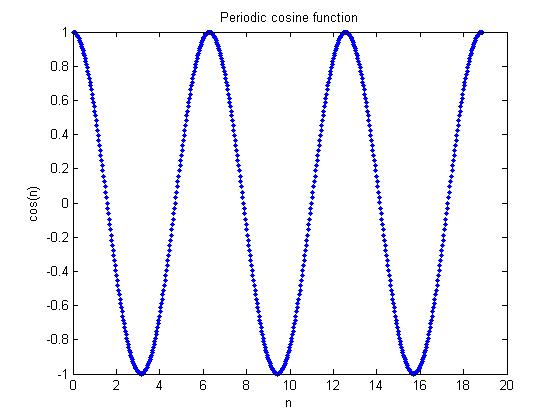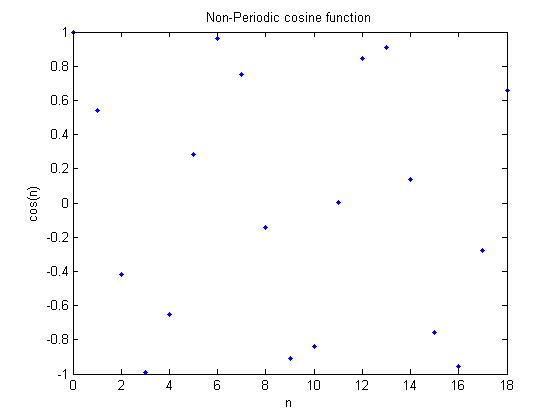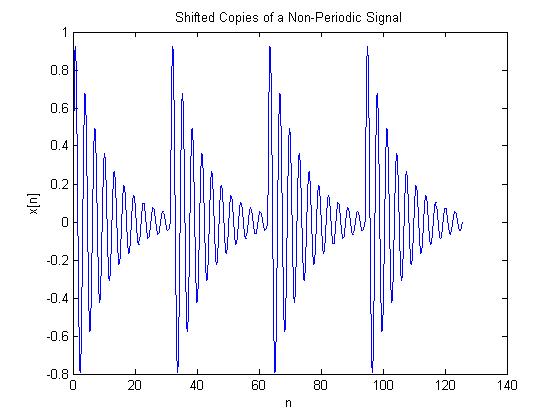| Line 43: | Line 43: | ||
== Part 2 == | == Part 2 == | ||
| + | |||
| + | <math>x[n]=e^{-t/10}*sin(2t)</math>. | ||
<pre> | <pre> | ||
Revision as of 09:52, 12 September 2008
Part 1
Seems like a lot of people used the cosine function in hw1 so thats the one i'll use now.
%{
Jeremiah Wise
9/11/08
HW #2 Part A 1
This program plots and displays a cosine wave
in DT. The first plot is periodic and the second
is not.
%}
%Periodic signal
delta = pi/100;
n = [0 : delta : 6 * pi];
plot(n, cos(n), '.');
title('Periodic cosine function');
xlabel('n');
ylabel('cos(n)');
%Non-Periodic Signal
figure(2)
delta = 1;
n = [0 : delta : 6 * pi];
plot(n, cos(n), '.');
title('Non-Periodic cosine function');
xlabel('n');
ylabel('cos(n)');
Part 2
$ x[n]=e^{-t/10}*sin(2t) $.
%{
Jeremiah Wise
9/12/08
HW #2 Part A 2
This program plots and displays a function that has been made periodic
by adding together shifted copies of that function.
%}
delta = 1 / 1000;
n = [0 : delta : 10 * pi];
x = exp(-n / 10) .* sin(2 * n);
for k = 1 : 1 : 2
n = [n (n + k*10*pi)];
x = [x x];
end
plot(n,x);
title('Shifted Copies of a Non-Periodic Signal');
xlabel('n');
ylabel('x[n]');




